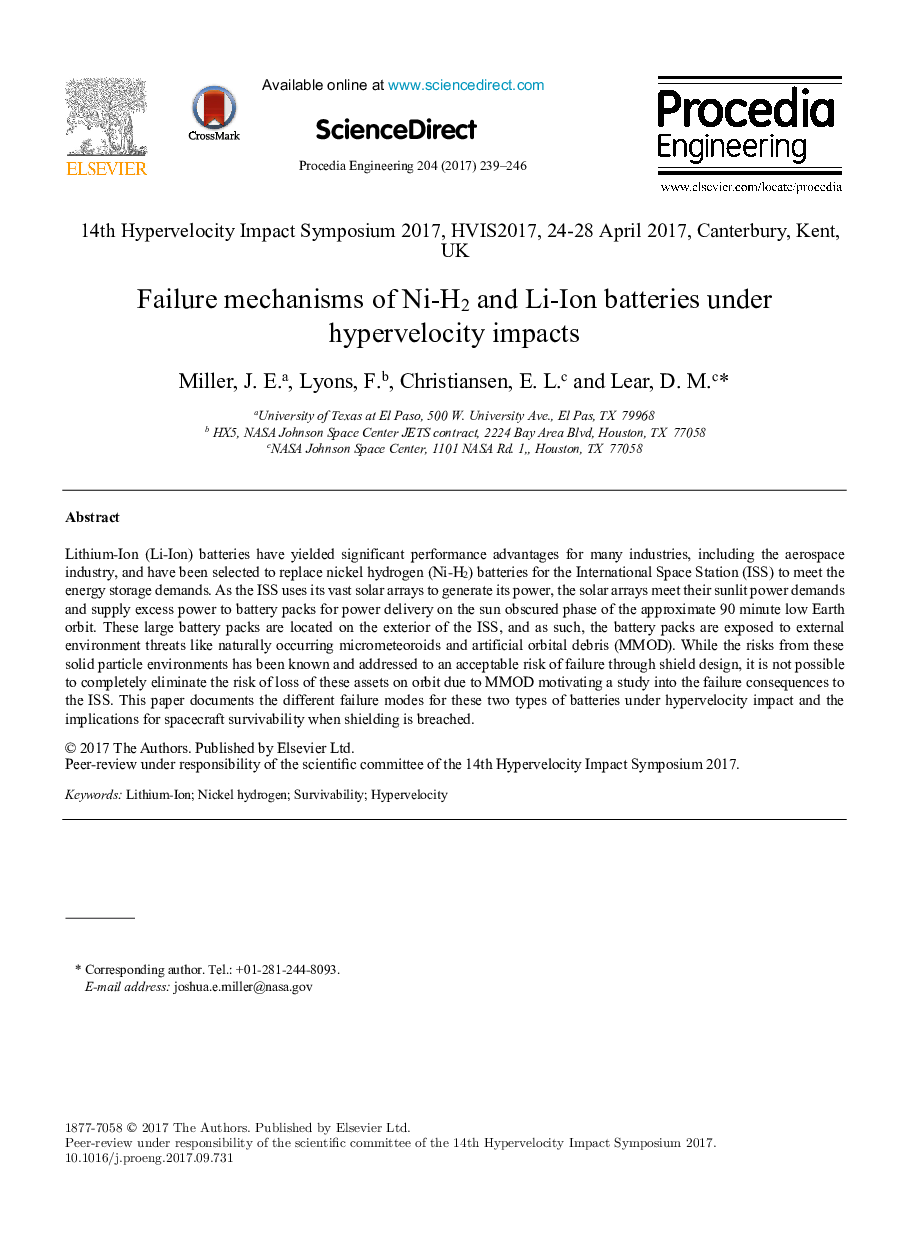| کد مقاله | کد نشریه | سال انتشار | مقاله انگلیسی | نسخه تمام متن |
|---|---|---|---|---|
| 7227935 | 1470622 | 2017 | 8 صفحه PDF | دانلود رایگان |
عنوان انگلیسی مقاله ISI
Failure mechanisms of Ni-H2 and Li-Ion batteries under hypervelocity impacts
دانلود مقاله + سفارش ترجمه
دانلود مقاله ISI انگلیسی
رایگان برای ایرانیان
موضوعات مرتبط
مهندسی و علوم پایه
سایر رشته های مهندسی
مهندسی (عمومی)
پیش نمایش صفحه اول مقاله

چکیده انگلیسی
Lithium-Ion (Li-Ion) batteries have yielded significant performance advantages for many industries, including the aerospace industry, and have been selected to replace nickel hydrogen (Ni-H2) batteries for the International Space Station (ISS) to meet the energy storage demands. As the ISS uses its vast solar arrays to generate its power, the solar arrays meet their sunlit power demands and supply excess power to battery packs for power delivery on the sun obscured phase of the approximate 90 minute low Earth orbit. These large battery packs are located on the exterior of the ISS, and as such, the battery packs are exposed to external environment threats like naturally occurring micrometeoroids and artificial orbital debris (MMOD). While the risks from these solid particle environments has been known and addressed to an acceptable risk of failure through shield design, it is not possible to completely eliminate the risk of loss of these assets on orbit due to MMOD motivating a study into the failure consequences to the ISS. This paper documents the different failure modes for these two types of batteries under hypervelocity impact and the implications for spacecraft survivability when shielding is breached.
ناشر
Database: Elsevier - ScienceDirect (ساینس دایرکت)
Journal: Procedia Engineering - Volume 204, 2017, Pages 239-246
Journal: Procedia Engineering - Volume 204, 2017, Pages 239-246
نویسندگان
J.E. Miller, F. Lyons, E.L. Christiansen, D.M. Lear,